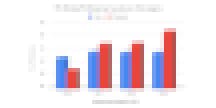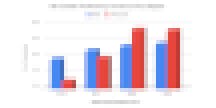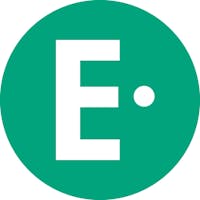In 2015, as Arkansas implemented new learning standards and an end-of-year test, educators at Paragould School District received discouraging news: Their test scores were significantly below the state average. For example, just 27 percent of Paragould’s middle school students scored proficient in math, compared with a statewide average higher than 40 percent. District leaders knew they needed to do something.
Teachers and administrators came together to set a growth goal and create a structured program to monitor and support students’ daily, weekly and monthly progress. Their efforts have paid off. When results came out for the 2017-18 school year, middle school math proficiency jumped 10 percentage points, surpassing the statewide average and earning the district recognition for top growth scores in the state.

Establishing a Benchmark
“When we got our test scores back at the end of the year, we were really excited about the growth we had within our school district,” recalls Matt McGowan, Technology Integration and Math Specialist at Paragould School District. Achieving this extraordinary growth required focused work every day, collaboration between each stakeholder in the district and the right combination of technology tools.
“At the district level, our goal is to be at 75 percent mastery on every one of our standards,” says McGowan. With that stated goal, Paragould’s teachers and school leaders now had a common target.
Aiming to hit that target, district leaders established a clear plan:
- Identify the learning gaps for each student.
- Provide additional instruction and/or practice to remediate standards.
- Monitor progress at all levels: students, teachers and administrators.
To identify learning gaps, teachers and district leaders worked with Edulastic, a K-12 digital assessment company, to create custom assessments. Each targets high priority standards and appropriate depth-of-knowledge levels with technology-enhanced items mimicking Arkansas’ ACT Aspire state test.
“After we figure out the high priority standards, we give those to our representative at Edulastic who comes up with a test for us,” says Melissa McPherson, Paragould Jr. High 8th grade math teacher. “It’s so nice because teachers don't have the time to come up with those common assessments.”
Visit Edulastic for more information about our district formative and common assessments.
Filling the Gaps
Because these custom assessments are administered online, teachers and administrators get immediate feedback on skill gaps. These insights not only allow better conversations among educators, they also promote collaboration and identify areas where support or instructional adjustments are needed. This, in turn, sets the stage for targeted remediation for those students most in need of assistance.
“Without the common assessments we wouldn't know where our students are standing throughout the school year and what we need to do to get them to where they need to be,” says McPherson, “The common assessments just open our eyes much earlier than if we waited until the ACT Aspire at the end of the year.”
Teachers share goals, strengths and areas for improvement with students as well. This transparency gives students ownership of their learning and motivates them to do their best. If students demonstrate standards proficiency on their assessments, designated remediation time becomes free time where they can choose to do art or read. Otherwise, students spend the remediation period working on understanding and mastering the standards.
Maintaining Focus Across the District
District and school administrators had to continually work to stay focused on the goal. For example, even though everyone has access to the same information from Edulastic reports, school leaders regularly present their data at district meetings. “It’s important for everyone to understand the data,” McGowan says.

Edulastic reports come directly from the custom assessments. The data is visible to both teachers and district leaders to help them efficiently track where more support is needed. In the classroom, teachers can use performance reports to adjust instruction in real time and use in-depth, standards-based reports to track mastery over time.

Edulastic integrated directly with the district’s other technology to keep reporting on track. Paragould leveraged Google Classroom and G Suite for Education for collaboration amongst teachers, communication with students and parents and overall task organization.

“With all of our technology, we can ensure that all students are successful no matter which classroom they’re in,” says Assistant Superintendent Nick Jankoviak. “With a wealth of academic data, we can have intense conversation.”
Reaping the Benefits
In 2018 and 2019, the district outpaced growth in the state.

These results exemplify the overall upward trend in Paragould’s test scores:
- Paragould Junior High School was number one in math and received a “Beating the Odds” award—recognizing the extraordinary growth of their socioeconomically-disadvantaged students—two years in a row.
- With a dramatic improvement of 18 points in math, the 8th grade moved above the state average.
- Oak Grove Middle School was number three in literacy and math combined.

This success has started to change the culture in the district, adding momentum to the upward learning trajectory. “Any time your test scores go up, and any time you start seeing success, it changes the culture of the building,” McGowan says. “We’ve seen that in two or three of our buildings so far. Teachers are wanting to push the kids a little bit further because they want to keep getting better.”
Jankoviak hopes other districts can replicate Paragould’s success. “It takes hard work, but you know, when we buckle down and work together we can get it done. We are doing that, and we are proud of it.”



